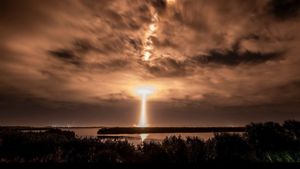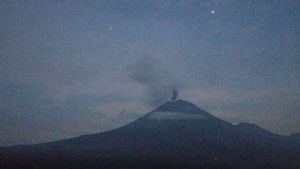JAKARTA Venus is known as a dangerous planet because of its toxic clouds and carbon dioxide dominance which reached 96.5 percent. However, the planet is getting a little better because of the discovery of oxygen.
According to a Sciencealert report, German Aerospace Center Fisikawan Heinz-Wilhelm H\"ubers and colleagues discovered signs of the presence of atomic oxygen on Venus during the day. This is good news because so far atomic oxygen has only been detected on the night of Venus.
Atomic oxygen is different from the oxygen we store everyday. Oxygen on Earth consists of two oxygen atoms that are bound or molecular, while oxygen on Venus consists of single atoms and does not last long because it is reactive and easily bound to other atoms.
Although different, the formation process of these two oxygens is estimated to be the same. H\"ubers and colleagues suspect that atomic oxygen on Venus is formed through photodissociation that divides molecules into oxygen and carbon monoxide.
However, this formation process is still an estimate because the astronomers have not been able to prove their statements. Currently, they are still focused on the difference between oxygen on Venus and Earth.
Previously, observations of atomic oxygen on Venus were fairly difficult because it was never seen. When Höbers switched to researching Venus by studying data from the Stratosphere Observatory for Infrared Astronomy (SOFIA), this atomic oxygen could only be learned.
So far, SOFIA has made observations at 17 Venus sites with three occasions, namely seven observations during the day, nine observations at night, and one observation at the terminator.
SEE ALSO:
From the results of this report, H\"ubers and his team hope to detail the differences between Earth and Venus. They want to learn the masses and compositions of Venus which are similar to Earth, while the contents of the planet are like a death hole.
The planet is full of sulfuric acid clouds that are so thick and almost completely inhabited by carbon dioxide. This high level of carbon makes the planet's surface temperature reach 464 degrees Celsius, a degree that kills humans.
This cloud will drop acidic hujam on the surface so that humans will not be able to live there. Astronomers will study all these conditions further so that information about Venus can be shared more publicly.
The English, Chinese, Japanese, Arabic, and French versions are automatically generated by the AI. So there may still be inaccuracies in translating, please always see Indonesian as our main language. (system supported by DigitalSiber.id)


















